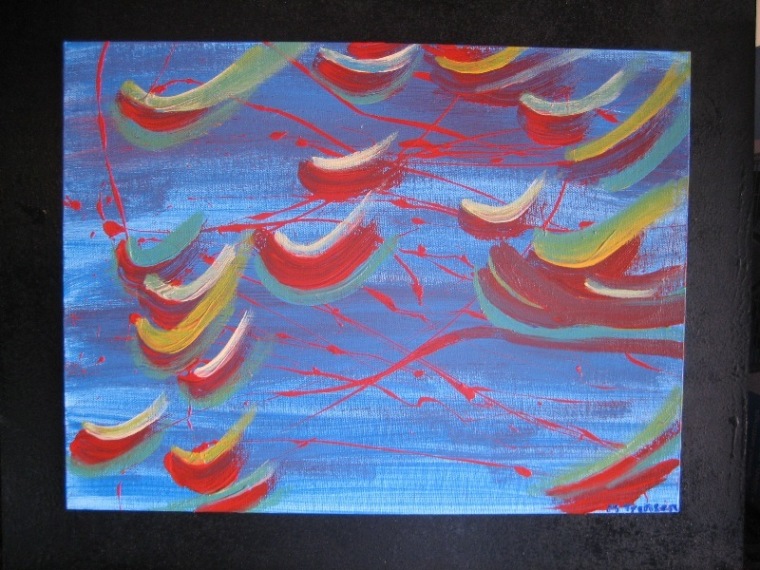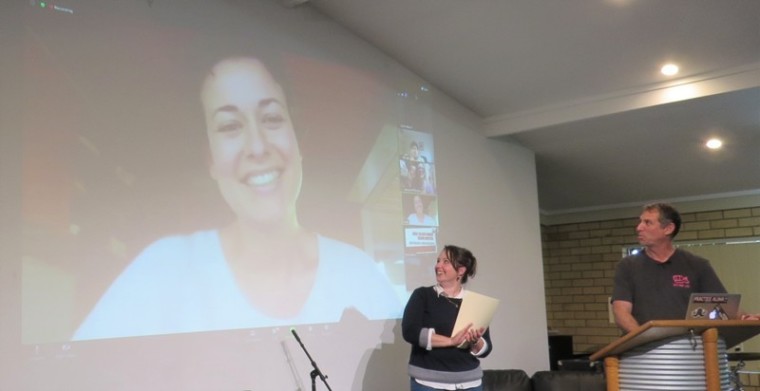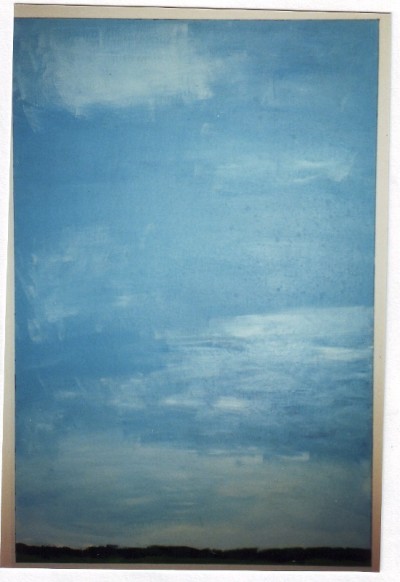
A great deal has been written on this in recent years. The wondrous and frightening uses of the new technology of 3-dimensional (3-D) printing has been heralded – there are a few beneficial medical innovations.
If you want to make an object using 3-dimensional printing, then you need to create your design on the computer, using appropriate software. This design is then sent to a 3-D printer, which has software that slices it (virtually) into myriads of horizontal layers (each approximating a normal 2-dimensional drawing).
The printer is thus instructed to squirt the appropriate material onto the surface, layer by layer,according to the pattern on each of these virtual slices, until the object is built up. Of course, the material squirted out needs to be something that hardens quite quickly, such as melted plastic or metal, or even some foodstuffs.
But many different types of material can be used – such as those compatible with the human body.
This process also happens in nature (without the need for computers) – stalagtites and stalagmites are formed by a very similar process of building up a structure layer by layer - but over a very long time.
A more detailed explanation can be found here: And the process is simply illustrated in this short (2-minute) video.
Now that this technology is mature enough to have gone past the “wow” factor, and there are a variety of different printers available that are not very expensive, innovative scientists have been finding some beneficial ways to use the process.
Joy for a mother-to-be
Many of us have seen ultrasound pictures of the unborn baby of a family member, and nothing can compare with the excitement we feel. But this is one of the joys that blind mothers cannot have.
...Until… an innovative doctor used a normal ultrasound to make a 3-dimensional model, so that a blind mother could feel the shape of her unborn baby's face.
Helping nerves to re-grow
When nerves are damaged, they often cannot grow back again in the right way, sometimes resulting in paralysis after accidents or disease. However, using 3-D printing technology, American researchers from various different disciplines collaborated to make tiny silicon “guides” to allow the nerves to grow in the correct direction. This little device has already been successful in helping mend the severed nerves of rats, enabling them to walk again. Following this success, the scientists are now working to improve the technique and also to learn more about the growth patterns of nerves.
Australian scientists provide high-tech facilities
In an international collaboration with a Spanish surgical team, scientists at the CSIRO's 3-D printing facility in Melbourne have produced a set of flexible titanium prosthetic ribs, without any screws or nuts or bolts that can come loose. These replaced the ribs of a man that were removed due to tumors in his chest cavity.
This particular printer used titanium powder as the building material, and fired a beam of electrons to melt the metal.
The Spanish surgeon reported “we were able to create a body part that was fully customised and fitted like a glove.”

Soft tissues can be modelled, even under sterile conditions
If you look at human tissue under a microscope, you would see that it is a gel-like structure with lots of pores and spaces, moulded onto a more rigid scaffold. The little blood vessels use these spaces to bring oxygen and nutrients to the tissues, and there are also nerves and perhaps ligaments and other structures associated with that particular part of the body or organ which also need “pathways” through the tissue. These natural pores are all of different sizes, to accommodate the various functions.
Medical scientsts at Tufts University in the USA realised this, and have used a novel 3-D printing technique to reproduce these natural-looking pores within a synthetic gel, that can be implanted directly into the body to replace diseased tissue.
The gel is already available. It is a transparent hydrogel made from silk protein which is inactive enough to be tolerated by the body. It can be sterilised and sealed, so that no further contamination is possible. The innovation comes with the type of 3-D printer, that uses a laser to poke microscopic holes in the gel through the sealed container. It does not require any other physical (non-sterile) materials.

The laser pulses are extremely fast, in the femtosecond range, which is shorter than a second by a factor of ten multiplied by itself 15 times. By tuning and adjusting the laser, the holes can be made different sizes, and at different depths within the block of gel. The printer is programmed to make a pre-determined pattern of these little pores, to mimic a natural type of body tissue.
In future, the gels can be pre-seeded with some living cells, for example from a blood vessel, then these will grow using the pores as a guide to make functional structures within the artificial body tissue.
Preliminary results from implanting these gels in mice are showing that the researchers are on the right track to making more viable and longer-lasting implants for those with diseased tissues.
Hope
Let us hope that 3-D printing will continue to be used for the benefit of society and not for its destruction, as we hope with all technology. Isaiah chapter 2, verse 4: says: “And he shall judge among the nations, and shall rebuke many people: and they shall beat their swords into plowshares, and their spears into pruning hooks: nation shall not lift up sword against nation, neither shall they learn war any more.”

Dr Mark Tronson - a 4 min video
Chairman – Well-Being Australia
Baptist Minister 45 years
- 1984 - Australian cricket team chaplain 17 years (Ret)
- 2001 - Life After Cricket (18 years Ret)
- 2009 - Olympic Ministry Medal – presented by Carl Lewis
- 2019 - The Gutenberg - (ARPA Christian Media premier award)
Gutenberg video - 2min 14sec
Married to Delma for 45 years with 4 children and 6 grand children